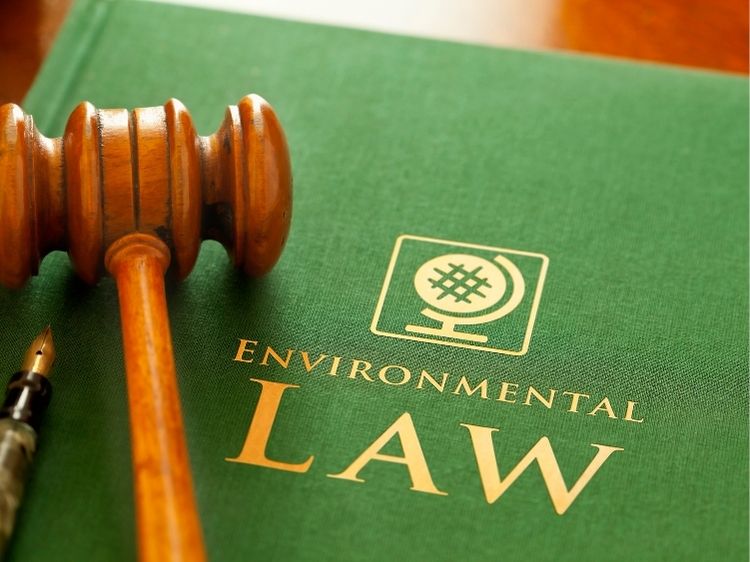Understanding Liability for Negligence: Your Ultimate Guide
Liability for negligence—sounds intimidating, right? Well, it’s actually a fundamental concept that plays a huge role in the legal world. Whether you’re a business owner, a homeowner, or just someone curious about the law, understanding negligence is crucial. In this article, we’re going to break it all down for you, explaining what liability for negligence means, how it works, and why it matters. So, buckle up, because by the end of this, you’ll be well-versed in the ins and outs of this important legal principle.
What is Negligence?
Before diving into liability, let’s get a grip on what negligence actually is. In simple terms, negligence occurs when someone fails to take reasonable care to avoid causing injury or loss to another person. It’s not about intentional harm—that would be a whole different ball game, like assault or fraud. Negligence is all about carelessness, the kind that leads to unintended harm.
Elements of Negligence
To establish negligence, four key elements need to be proven. These are like the building blocks of any negligence claim:
- Duty of Care: First off, the defendant must have owed a duty of care to the plaintiff. This means they had a legal obligation to act with a certain standard of care. For example, drivers owe a duty of care to other road users.
- Breach of Duty: Next, it must be shown that the defendant breached that duty of care. Did they act (or fail to act) in a way that a reasonable person wouldn’t have? If yes, that’s a breach.
- Causation: This element connects the breach of duty directly to the harm caused. The plaintiff needs to prove that the defendant’s actions (or inactions) were the direct cause of their injury or loss.
- Damages: Finally, the plaintiff must have suffered actual damages—be it physical injury, financial loss, or emotional distress—as a result of the breach.
Types of Negligence
Not all negligence cases are created equal. Let’s explore the different types:
- Contributory Negligence: This is when the plaintiff is also partly at fault for the injury or loss. In some jurisdictions, if you’re found to have contributed to your own harm, you might not be able to recover damages at all.
- Comparative Negligence: Here, the plaintiff’s compensation is reduced by the percentage of their own fault. So, if you were 30% responsible for the accident, you’d only recover 70% of the damages.
- Gross Negligence: This is negligence taken to the extreme. It’s not just a lapse in judgment; it’s a complete disregard for the safety of others. Gross negligence can sometimes lead to punitive damages, which are meant to punish the defendant.
Liability for Negligence Explained
Now that we’ve covered what negligence is, let’s talk liability. When someone is found liable for negligence, they are legally responsible for the harm their carelessness caused. This could mean having to pay for medical bills, repair costs, or even compensating for emotional distress.
In many cases, liability for negligence is covered by insurance. For example, if you’re in a car accident and found liable, your auto insurance will likely cover the damages—up to a certain limit. However, in cases of gross negligence, insurance might not cover the damages, leaving the defendant personally responsible.
How Liability is Determined
Determining liability for negligence isn’t always straightforward. It usually involves a thorough investigation, where all the elements of negligence are examined. The process typically includes:
- Investigation: Gathering evidence like witness statements, photos, and expert opinions.
- Legal Analysis: Applying the law to the facts to see if the elements of negligence are met.
- Court Proceedings: If a settlement isn’t reached, the case might go to court, where a judge or jury decides if the defendant is liable.
Common Examples of Negligence Cases
Negligence can occur in a variety of scenarios. Here are a few common examples:
- Car Accidents: One of the most typical negligence claims. If a driver runs a red light and causes an accident, they can be found liable for negligence.
- Medical Malpractice: When a healthcare provider fails to provide the standard of care, leading to patient harm, they could be liable for negligence.
- Slip and Fall: Property owners have a duty to keep their premises safe. If someone slips on a wet floor in a store, the store owner could be liable for negligence.
Defenses Against Negligence Claims
Just because someone files a negligence claim doesn’t mean they’ll win. Defendants can raise several defenses, including:
- Assumption of Risk: If the plaintiff knew the risk involved and chose to take it anyway, the defendant might not be liable.
- Contributory Negligence: As mentioned earlier, if the plaintiff contributed to their own harm, they might not recover damages.
- No Duty of Care: The defendant might argue that they didn’t owe a duty of care to the plaintiff in the first place.
FAQs About Liability for Negligence
- What’s the difference between negligence and gross negligence?
Gross negligence is a severe form of negligence that shows a reckless disregard for the safety of others. It’s much more serious and can lead to higher damages. - Can I be held liable for negligence if I didn’t intend to cause harm?
Yes, negligence doesn’t require intent to harm. It’s about failing to act with the care that a reasonable person would. - How can I protect myself from liability for negligence?
The best way to protect yourself is to act reasonably and responsibly in all situations. Also, having appropriate insurance can help cover potential liabilities.
Conclusion
Understanding liability for negligence is crucial, especially in a world where accidents and mistakes can have serious consequences. By knowing what negligence is, how it’s proven, and what defenses might be available, you’re better equipped to navigate any legal challenges that come your way. Remember, whether you’re a plaintiff or defendant, the key is to act with care and responsibility in everything you do.
Authoritative Links:
- www.law.cornell.edu/wex/negligence
- www.findlaw.com/injury/accident-injury-law/negligence.html
- www.legalzoom.com/articles/what-is-negligence
Liability for Negligence: Understanding the Basics and Beyond
Introduction
Ever wondered who’s responsible when things go wrong? Whether it’s a slip on a wet floor, a medical mishap, or a car accident, the concept of liability for negligence often comes into play. Negligence is a cornerstone of personal injury law, holding individuals or entities accountable when their lack of care leads to someone else’s harm. But what does this mean for you, and how does it actually work?
In this article, we’ll dive deep into the nuances of liability for negligence, unravel the legal jargon, and explore how it impacts everyday life. Whether you’re a concerned citizen, a business owner, or just curious about the law, this guide will give you the clarity you need.
What is Negligence?
At its core, negligence is about failing to take reasonable care. When someone’s careless actions (or inactions) cause harm to another person, the negligent party can be held legally responsible. The law expects individuals to act with a certain level of care and caution to prevent harm to others. When this duty is breached, and injury results, liability for negligence is often the legal outcome.
For instance, imagine you’re driving down the road, and another driver, engrossed in their phone, runs a red light and crashes into your car. Their distraction (negligence) caused the accident, making them liable for any damages or injuries you sustained.
The Elements of Negligence
To prove liability for negligence, four key elements must be established:
- Duty of Care: The defendant (the person being accused) must have owed a duty of care to the plaintiff (the person bringing the lawsuit). For example, drivers have a duty to operate their vehicles safely.
- Breach of Duty: It must be shown that the defendant breached this duty by acting, or failing to act, in a certain way. Using our driving example, the breach occurred when the other driver was distracted by their phone.
- Causation: There must be a direct link between the defendant’s breach of duty and the harm caused. In other words, the plaintiff must prove that the accident wouldn’t have happened if it weren’t for the defendant’s actions.
- Damages: Finally, the plaintiff must have suffered actual harm, such as physical injury, property damage, or emotional distress, as a result of the defendant’s actions.
If all these elements are present, the defendant may be found liable for negligence and required to compensate the plaintiff for their losses.
Types of Negligence
Not all negligence cases are cut and dry. The law recognizes various forms of negligence, each with its own unique implications:
- Contributory Negligence: In some cases, the plaintiff may have also been negligent. If a court finds that the plaintiff’s own negligence contributed to their injury, their compensation may be reduced or even denied. Some jurisdictions still adhere to the contributory negligence rule, where if the plaintiff is found even slightly negligent, they can’t recover damages.
- Comparative Negligence: More commonly, courts apply comparative negligence, where the plaintiff’s compensation is reduced by their percentage of fault. For example, if you’re found to be 20% at fault for an accident, your compensation would be reduced by 20%.
- Gross Negligence: This occurs when the defendant’s actions go beyond mere carelessness and demonstrate a reckless disregard for the safety of others. Gross negligence can lead to punitive damages, which are intended to punish the defendant rather than simply compensate the plaintiff.
- Vicarious Liability: Sometimes, an individual or entity can be held liable for the negligence of another person. For example, employers may be vicariously liable for the negligent actions of their employees if those actions occurred within the scope of employment.
Real-World Examples of Liability for Negligence
Negligence isn’t just a legal concept; it plays out in real life every day. Here are some examples where liability for negligence might arise:
- Medical Malpractice: A doctor fails to diagnose a condition that any competent doctor would have identified, leading to worsening health for the patient.
- Slip and Fall Accidents: A store owner fails to clean up a spill, causing a customer to slip, fall, and injure themselves.
- Product Liability: A manufacturer releases a faulty product that injures consumers, such as a car with defective brakes.
- Workplace Accidents: An employer neglects safety protocols, resulting in an employee’s injury on the job.
Each of these scenarios could lead to a lawsuit where the injured party seeks compensation for their losses.
Defenses to Negligence Claims
While proving negligence can lead to compensation for the injured party, defendants have several defenses they might raise to avoid liability:
- Assumption of Risk: If the plaintiff knowingly and voluntarily assumed the risk associated with a certain activity, the defendant might not be held liable. For instance, someone who participates in a dangerous sport might be considered to have assumed the risks inherent in that activity.
- Waiver of Liability: Sometimes, plaintiffs sign waivers that limit their right to sue for negligence. However, these waivers aren’t always enforceable, especially if gross negligence is involved.
- Statute of Limitations: Negligence claims must be filed within a specific time frame. If a plaintiff waits too long to file a lawsuit, they might lose their right to seek compensation.
FAQs About Liability for Negligence
- What should I do if I think I’ve been a victim of negligence?
- If you believe you’ve been harmed due to someone else’s negligence, it’s crucial to document everything, seek medical attention, and consult with a personal injury attorney to explore your options.
- Can I sue someone for negligence even if I wasn’t physically injured?
- Yes, you can sue for negligence even if you weren’t physically injured, but the damages awarded may be less. Emotional distress, financial losses, or damage to property can also be grounds for a negligence lawsuit.
- How long do I have to file a negligence claim?
- The time limit varies by jurisdiction but is typically between one and three years from the date of the injury. It’s essential to act quickly to ensure your rights are protected.
- What’s the difference between negligence and gross negligence?
- Negligence involves failing to take reasonable care, while gross negligence indicates a more severe disregard for the safety of others. Gross negligence can result in higher compensation and punitive damages.
Conclusion
Understanding liability for negligence is essential, whether you’re navigating a personal injury case or simply want to be informed about your rights. Negligence law serves as a crucial mechanism for holding people and organizations accountable when their carelessness causes harm. By grasping the key elements, defenses, and real-world implications, you can better protect yourself and make informed decisions if you ever find yourself on either side of a negligence claim.





